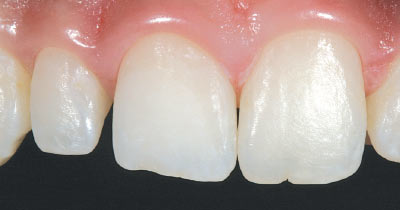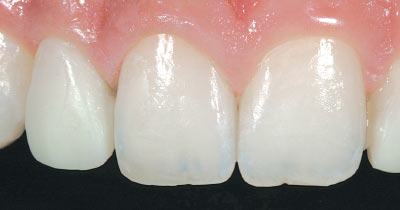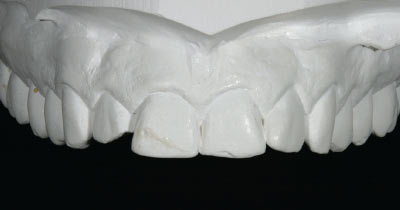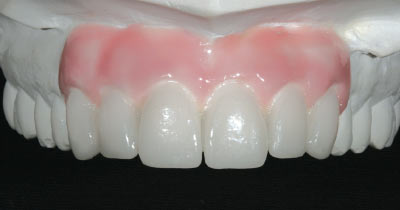Concepts of Temporary Restorations
Learn how a “customized” temporary is a blueprint for success
(Continued)
 |
| Figure 1: An example of a patient that would benefit from a direct (chairside) technique using bonding materials to alter tooth shape and appearance of the teeth. |
 |
| Figure 2: The tooth surfaces are altered with bonding materials allowing the patient to clearly see the vision the dentist wants to create in the final restoration. |
 |
| Figure 3: An example of an indirect technique for creating a customized temporary restoration. The dental lab uses a stone model of the teeth to create a "wax-up" (the addition of tooth colored wax) to fabricate a prototype of what the final restoration will look like. |
 |
| Figure 4: This is an example of a very well done wax-up that changes tooth form and a smile's appearance. |
Material Choice Makes A Material Difference
Following planning, a variety of techniques and materials can be used to fabricate customized temporary restorations. These include:
- Direct — additive techniques, using composite resin (white filling) tooth-colored materials bonded directly to teeth [Figures 1 and 2].
- Indirect — diagnostic techniques, in which new, natural-looking teeth are first built and shaped from tooth-colored wax or composite resin that is applied to accurate models of the individual's bite [Figures 3 and 4]. This allows for the creation of an outline or shell that is filled with an acrylic material that will be used as a customized temporary for new tooth shapes.
These outlines or shells act as a preparatory drilling guide so that drilling is minimally invasive, assuring the maximum preservation of natural, healthy tooth structure. They are also used to stabilize the teeth after preparation by preventing shifting from occurring while final restorations are being made.
Once constructed, customized temporary restorations of semi-durable plastic materials act as prototypes that can be modified with the patient as an active participant by adding or subtracting materials in the next phase of the design process. This decision-making partnership is key to success.


